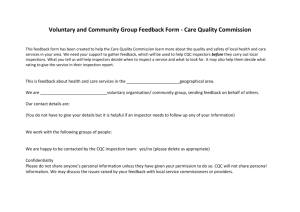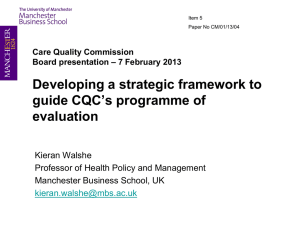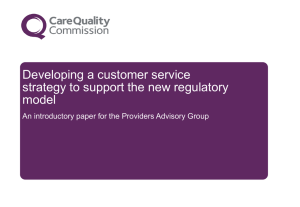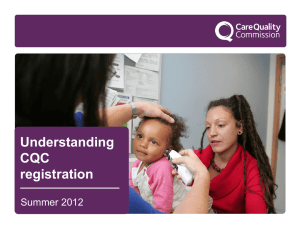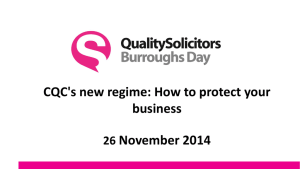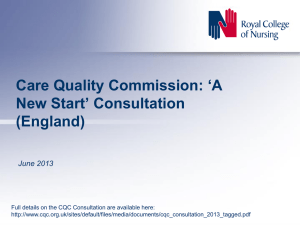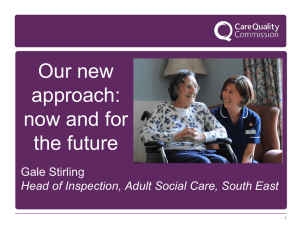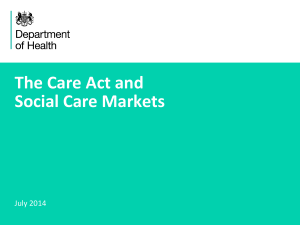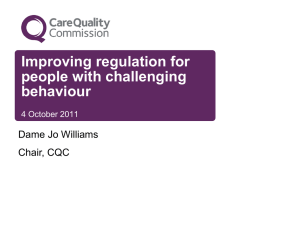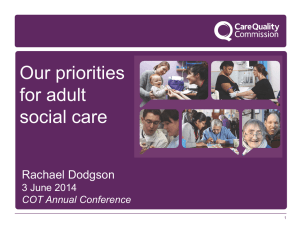Provider communications strategy
advertisement
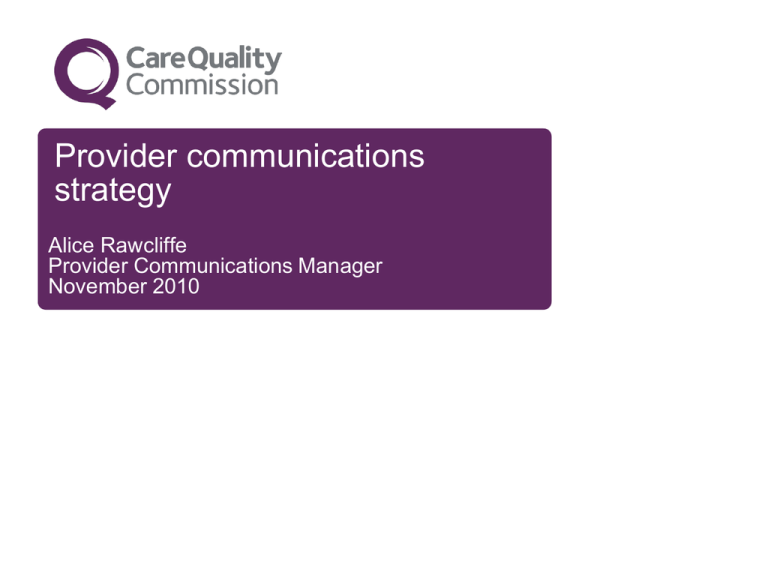
Provider communications strategy Alice Rawcliffe Provider Communications Manager November 2010 Introduction This strategy aims to set out how CQC will engage with providers of care services to achieve its objectives during the period November 2010 to April 2012. It is linked to the stakeholder, media, user and internal communications strategies which are also the responsibility of the Strategic Marketing and Communications directorate. It will also form part of the ‘customer service strategy’ which is currently being developed. 2 The context 3 Complex communications landscape This strategy focuses on the work of the ‘corporate’ provider communications team but also considers other areas of the organisation which impact on the experience and reputation of CQC 4 Who do we communicate with? 5 What the research says…by sector NHS • New system feels very different to them • Need to feel we aren’t going to over-react to issues • Rely on monthly bulletin / website for updates rather than calling NCC • Keep in regular contact with regional teams • Have clear administration in place to manage regulatory systems Adult social care / independent health • Used to regular contact and advice from CSCI and early CQC • Need clear definition of our relationship with them under new system • Rely heavily on NCC rather than using website • Don’t have systems in Dentists / ambulances • Critical of CQC • See registration as an unnecessary burden • Frustrated by lack of available guidance on new system • Sometimes adversarial relationship with CQC (and NCC) place to do selfassessment • Process for ending quality ratings has created bad feeling 6 What the research says…a summary Working well • Monthly professionals e-bulletin • Establishment of provider reference groups • Guidance – clear and easy to read (but difficult to find) • Contact with regional teams (where this is happening) Areas for improvement • Website (navigation and search function) • Online services (to allow us to be more sector specific) • Consistency of advice (NCC, regional teams and back-up) • Coordination of communication • Volume of guidance / information • Embedding of compliance monitoring (internally and externally) 7 Where do we want to get to? Issue From To Consistency of advice Conflicting advice from CQC (NCC, inspectors and guidance) Providers always receive clear, consistent advice from CQC Clear service standards Slow response from CQC in response to queries, processes, publication etc… Agreed SLAs for providers are being met and are available on our website for providers to view Clarity of roles / relationships Varying experiences of CQC. Lack of clarity around roles. Clear, well defined roles so providers know what is expected of them and who to contact if they have a query Feedback mechanisms Very little engagement with the sector. Little response given to feedback received Clearly defined feedback mechanisms with regular reporting about how it has been used (both internally and externally) Website and online services Website that is difficult to navigate and with a poor search facility. Reliance on paper processes with limited online services. New public website with improved navigation and content tailored to audiences. Move to online services e.g. provider portal, RSS feeds etc… Joined up communication Providers receiving uncoordinated communication from various teams across CQC Providers receive regular joined up communication that is relevant, targeted and consistent Internal communications Providers often aware of information before their local inspectors Agreed process for internal and external distributions to ensure CQC staff are always briefed before providers 8 Joined up communications 9 How will we measure it? We will develop a measurement framework with benchmarked performance indicators for each of our ‘aims’. This will allow us to monitor trends across the different areas. The mechanisms we will use to measure against the indicators include: • Quarterly provider reference group survey • Monthly poll via provider reference group home page (temperature check) • Surveys of e-bulletin subscribers • Quarterly attendance at operations management group meetings • Regular meetings with regional communications managers • Quarterly ‘provider visits’ by corporate communications team • Monthly statistics from shared services 10 Next steps • Development of process for coordination of communications to providers (working with representatives from teams across CQC) and approval by relevant authority (RDA or BDA) • Development of measurement framework for reporting against agreed performance indicators • Six monthly update to Executive Team on progress against this strategy 11
